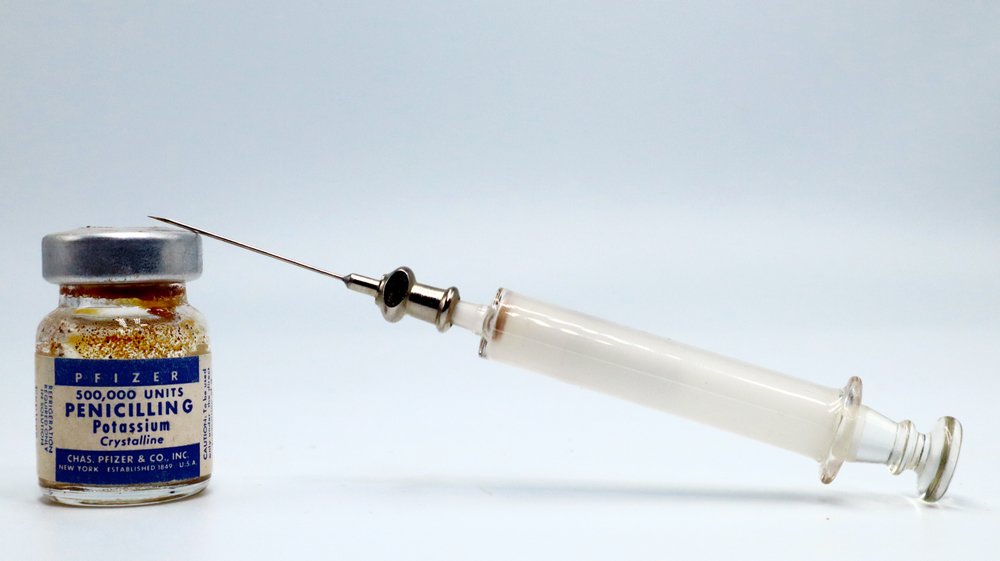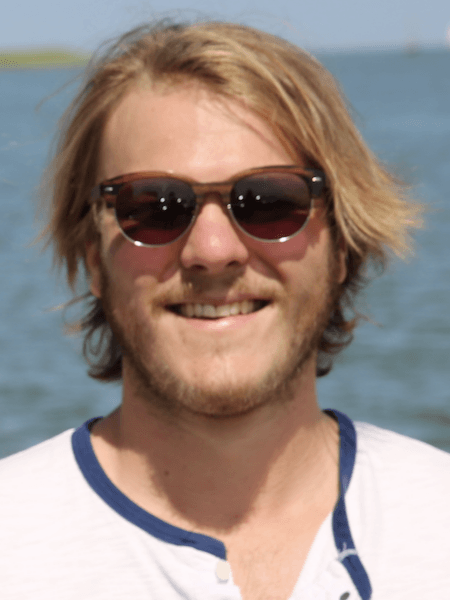Charles Pfizer & Co.
In 1849, Charles Pfizer, together with his cousin Charles Erhart, founded the Charles Pfizer & Company in Brooklyn, New York. Dubbing themselves as Manufacturing Chemists, the company began by producing an antiparasitic drug. Business boomed during the American Civil War when the company marketed the sale of iodine salts, mercurial and bismuth for pharmaceutical use. By the beginning of the twentieth century, Pfizer & Co. was one of the largest specialty chemical manufacturers in the United States, before turning towards pharmaceutical research and development. Today, it is household name – particularly tied to the mRNA vaccine that rolled out world-wide in response to the Covid-19 pandemic.
Personal origins
Charles Pfizer was born on the 22nd of March, 1824 in Ludwigsburg, near Stuttgart in Germany. His family was of middle-class origins and as such he had a regular school education. Charles received practical training in chemical preparation and compounding though a pharmacy style apprenticeship. At the age of 23, he set off with his cousin for a new life in the United States.
“According to Charles Pfizer’s daughter Alice, his motivations for immigrating to America were similar to those that prompted many ambitious young men to make the voyage: a greater opportunity to advance faster and further in his profession and a desire to live in a land of freedom and liberty,” wrote William H. Stevenson III for the German Historical Society.
The beginnings of an empire
Pfizer & Co. was established with the help of $2,500 loan from Charles Pfizer’s father (the amount converted from 1849 is worth about $87,000 in 2021). With this money they took out a $1,000 mortgage for a brick building in New York which would long serve as their research and manufacturing plant.
From there, Pfizer and Erhart began producing a candied form of santonin (an antiparasitic drug). Erhart had trained as a confectioner, and mixed the drug with an almond-toffee favouring to make the bitter tasting drug more palatable for consumers. It was a great success and their partnership started to bloom. Historians have suggested the cousins and business partners moved to the US already with the dual concept in mind.
The two cousins and partners moved on from their early success with their consumer-based drugs and decided to manufacture chemicals for wholesale.
Company Development
In 1854, the company began to expand its operations of chemical manufacturing, purchasing the adjacent land next to the factory. They continued to expand their operations for decades, buying dozens and dozens lots of land in the area. Pfizer & Co. opened their first office in downtown Manhattan in 1957. Their office location would move to the New York financial district (Wall Street) ten years later. By 1860 their sales were estimated at about $700,000 (or $23 million by today’s standards).
The American Civil War (1861-1865) turned out to be great for the chemical manufacturing business. With all the millions of casualties nation-wide, the demand for Pfizer produced antiseptics, disinfectants and pharmaceuticals were of high order. Pfizer’s output was helped along at the time by an increase in tariffs, implemented to discourage foreign competition. The government’s stance on tariffs gave Pfizer an opportunity to become an industry leader and build a competitive rivalry with the major chemical producers of Europe.
Pfizer & Co. leveraged the governments stand on tariffs to find success in the production of tartaric and citric acids. By the 1880’s, the company’s leading product became citric acid, which was often used in the new beverage products such as Coca-Coca and Dr Pepper.
Incorporated
Erhart died in 1891. This is when their initial partnership agreement then came into effect. It stipulated that the surviving partner could buy the other's share of the company for half of its inventory value. Pfizer promptly exercised this option and paid out his partner's beneficiaries the sum of $119,350 (or about $3 million by today’s calculations) for Erhart's half of the business. Pfizer continued as head of the company for 51 years, until 1900, when the company was incorporated. Charles Pfizer Jr. then became the company's first president. However, he was forced out of the company in 1905. Another of Charles’ sons, Emile Pfizer, assumed the company’s presidency from Charles Jr. Emile turned out to be the last family member to control the business.
A year later Charles Pfizer died due to complications of injuries sustained after falling down a flight of stairs in his Rhode Island home. At the time of his death, Pfizer & Co. sales were $3,441,000 (equivalent to $15 million today), making it one of the largest speciality chemical companies in the USA.
Research and development
Chemical shortages caused by World War I (1914-1918) meant that Pfizer spent time and money searching for new ways to do things. This led to Pfizer chemists discovering a fungus that ferments sugar to citric acid. As a result, the company developed expertise in fermentation technology, which were later applied into the mass production of penicillin which helped Allied forces in World War II (1939-1945).
Pfizer continued to research and develop new ranges of antibiotics to ensure profits would continue to grow. Upon their discovery of oxytetracycline in 1950, the company changed their focus from manufacturers of fine chemicals to that of a research-based pharmaceutical company.
By the 1950’s, Pfizer had offices all around the world. They continued their research-based pharmaceutical approach for decades and brought the world such medications as Diflucan in 1981 (the first oral treatment for severe fungal infections), and in 1989 discovered the infamous male erectile dysfunctional drug Viagra (while researching high blood pressure).
Big (and bad) business
Pfizer grew its business ruthlessly, merging and acquiring many companies along the way. After acquiring the US pharmaceutical company, Wyeth, in October 2009, Pfizer officially became the largest pharmaceutical company in the world. In November, 2015, Pfizer and Allergan announced a merger worth $16 billion – which is the third largest corporate merger in history. Since then, many more mergers and acquisitions have occurred – showing the company has no desire to slow down.
Pfizer doesn’t come without controversy. The company have been accused of aggressive and illegal pharmaceutical marketing on many occasions and are therefore no stranger to the court-room. The most notable case is the 2009 settlement for the illegal marketing of the anti-inflammatory drug, Bextra. The company was also accused of paying kickbacks related to the drug and submitting false claims to government health care programs based on uses that weren’t medically accepted. Pfizer accepted responsibility and paid out $2.3 billion, which was the biggest health care settlement in history (and the second biggest still today).
Bextra was pulled from the market in 2005 after it was deemed unsafe.
Pfizer today
According to Forbes, Pfizer is worth over $215 billion today, with average sales of $47.6 billion per year. These figures are set to spike after the company’s input for vaccine development for the Pfizer vaccine in the fight against the Covid-19 pandemic. Pfizer used $2 billion of their own funds to research and develop their mRNA vaccine.
Pfizer CEO Albert Bourla, said that he declined money from Operation Warp Speed to avoid government intervention, stating that, "When you get money from someone that always comes with strings. They want to see how we are going to progress, what type of moves you are going to do… They want reports… And also, I wanted to keep Pfizer out of politics."
Even though the product is still undergoing human trials until 2023, the company has provided hundreds of millions of vaccine doses around the world due to emergency powers issued by the World Health Organisation. BioNTech who is partnering with Pfizer on the program have said they expect to manufacture about 3 billion doses by the end of 2021. Given the fact two doses of the vaccine cost about $39 per unit, that’s a big injection for the world leaders in pharma.
Not a bad success story for an immigrant with an idea.
 Charles Pfizer / A German-American businessman who co-founded the Pfizer & Company.
Charles Pfizer / A German-American businessman who co-founded the Pfizer & Company. read articles
 What are famous business minds investing in?
/2021-08-16
What are famous business minds investing in?
/2021-08-16
How have the super wealthy made their fortunes and where are the business savvy putting their money?
What do famous business people do in their spare time?
most read
 Chick-fil-A sets sights on Europe
/2023-03-15
Chick-fil-A sets sights on Europe
/2023-03-15
The fast-food restaurant chains $1 billion international expansion plan
Over one billion YouTube videos are watched around the world every single day.
Explore Edu3Dcation franchise opportunities, offering innovative 3D experiences for children.
The Fornetti Group is working to become a leader in the franchise market of frozen bakery products not only in Hungary but also in Europe.
A franchise package, otherwise known as a franchise license is at the heart of every franchise system. It contains the franchisors complete business concept from A to Z.

